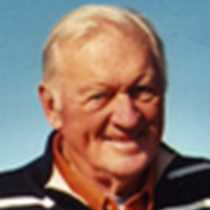Mouth of the Columbia River
M/V Sea Lion guests arrived at the mouth of the Columbia River in soggy weather, duplicating the Corps of Discovery’s experience in late 1805. However, by mid-morning, the sun broke through allowing all hands to see the north and south jetties, the Lewis & Clark River (Fort Clatsop’s location), Baker Bay (Washington), and the craggy outline of Cape Disappointment.
Astoria, named for New Yorker John Jacob Astor, and the oldest American town west of the Rockies (1811), offered a buffet of historical servings. For a first course, we visited the world-class Columbia River Maritime Museum. A museum docent guided guests through that recently remodeled facility, revealing a story of nature’s endless power – from both the Pacific Ocean and the muscular Columbia River. One room tracked the story of ships at the “Graveyard of the Pacific,” while other rooms described the economic and maritime growth of the region. Specific areas were set aside for the dramatic and ever-changing challenges of the U.S. Coast Guard.
Mid-morning, guests climbed aboard a motor coach which crested at the summit of Coxcomb Hill. The newly-restored Astor Column (164 stairs) was the focus of our 360-degree overlook. With the encouragement of the sun and a clear view, guests lingered at this prominence for almost half an hour. Taking different routes up and down the hill (sometimes used by movie companies to depict San Francisco or Seattle), we saw sturdy, handsome samples of Astoria’s over 70 Victorian homes. Later, Astoria’s homey shopping district attracted many of us, with visits to the Columbia Chocolate Factory, a compact J.C. Penney store, the Danish Bakery, an Antique Mall, and home-spun boutiques.
Following lunch, guests motored northward across the 4.1-mile long Astoria-Megler Bridge which links Oregon and Washington states. Our destination was the Lewis & Clark Interpretive Center on the heights of Cape Disappointment. After a National Park Ranger talked about foods consumed by the Corps, we followed a self-guided tour of the Lewis & Clark journey in murals, photos, and reproductions of the Journals. Stretching below the Cape’s cliffs was the shimmering Pacific Ocean which seemed to race into the surging river’s mouth.
Each leg of the day’s rambling was narrated by the ship’s Expedition Leader, Naturalist and Historian. Virtually every guest joined in the fun, having become partners on the journey that occurred exactly 200 years ago: “In the Wake of Lewis & Clark.”
M/V Sea Lion guests arrived at the mouth of the Columbia River in soggy weather, duplicating the Corps of Discovery’s experience in late 1805. However, by mid-morning, the sun broke through allowing all hands to see the north and south jetties, the Lewis & Clark River (Fort Clatsop’s location), Baker Bay (Washington), and the craggy outline of Cape Disappointment.
Astoria, named for New Yorker John Jacob Astor, and the oldest American town west of the Rockies (1811), offered a buffet of historical servings. For a first course, we visited the world-class Columbia River Maritime Museum. A museum docent guided guests through that recently remodeled facility, revealing a story of nature’s endless power – from both the Pacific Ocean and the muscular Columbia River. One room tracked the story of ships at the “Graveyard of the Pacific,” while other rooms described the economic and maritime growth of the region. Specific areas were set aside for the dramatic and ever-changing challenges of the U.S. Coast Guard.
Mid-morning, guests climbed aboard a motor coach which crested at the summit of Coxcomb Hill. The newly-restored Astor Column (164 stairs) was the focus of our 360-degree overlook. With the encouragement of the sun and a clear view, guests lingered at this prominence for almost half an hour. Taking different routes up and down the hill (sometimes used by movie companies to depict San Francisco or Seattle), we saw sturdy, handsome samples of Astoria’s over 70 Victorian homes. Later, Astoria’s homey shopping district attracted many of us, with visits to the Columbia Chocolate Factory, a compact J.C. Penney store, the Danish Bakery, an Antique Mall, and home-spun boutiques.
Following lunch, guests motored northward across the 4.1-mile long Astoria-Megler Bridge which links Oregon and Washington states. Our destination was the Lewis & Clark Interpretive Center on the heights of Cape Disappointment. After a National Park Ranger talked about foods consumed by the Corps, we followed a self-guided tour of the Lewis & Clark journey in murals, photos, and reproductions of the Journals. Stretching below the Cape’s cliffs was the shimmering Pacific Ocean which seemed to race into the surging river’s mouth.
Each leg of the day’s rambling was narrated by the ship’s Expedition Leader, Naturalist and Historian. Virtually every guest joined in the fun, having become partners on the journey that occurred exactly 200 years ago: “In the Wake of Lewis & Clark.”




